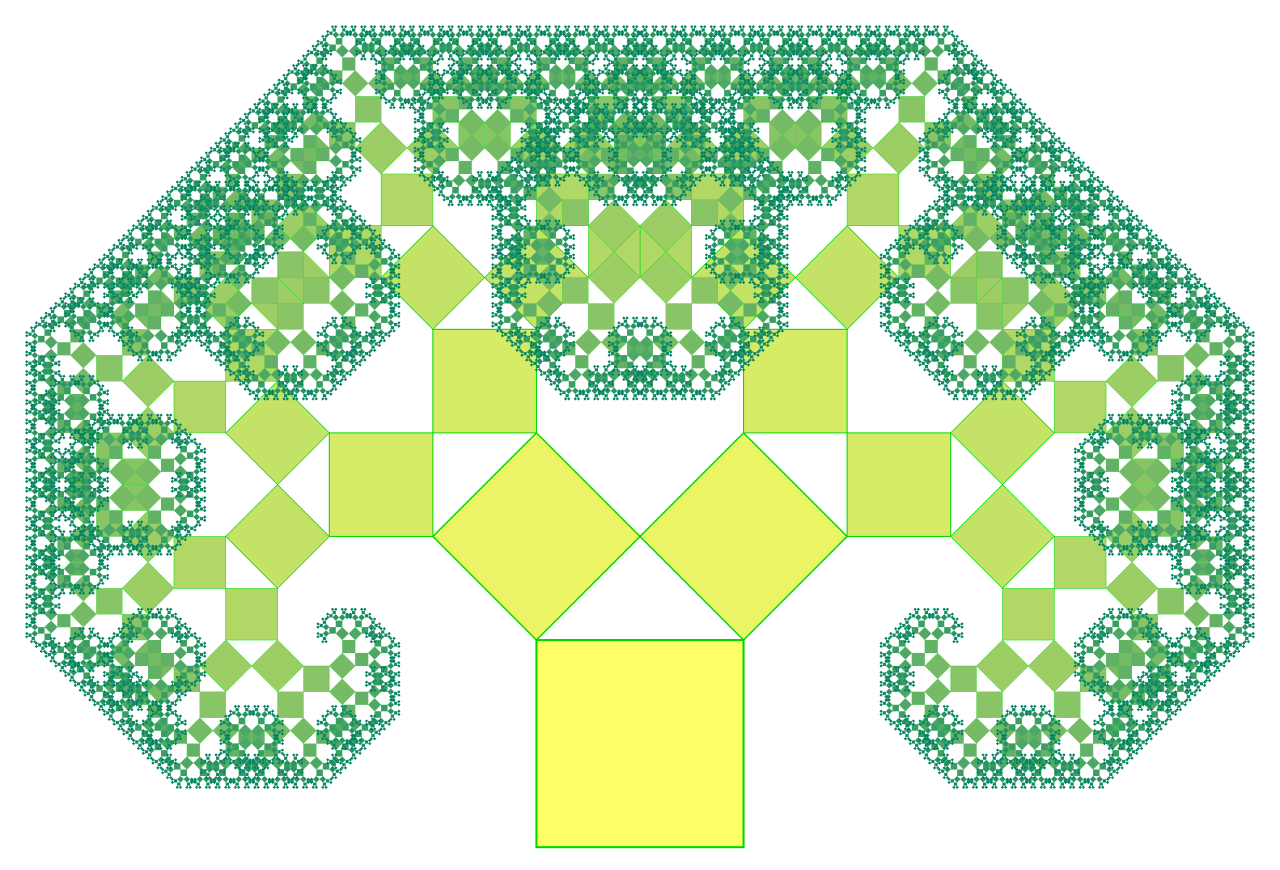In Using iterators to write highly composeable code, we saw that the staged approach to data transformation is decomposed, but duplicates the entire data set. Whereas, the single pass approach is more efficient, but the code was entangled and monolithic.
Now we’re going to look at an interesting approach for building composeable pipelines of transformations without incurring a memory penalty, transducers.
Let’s start with a review of reducing (a/k/a “folding”):
reducers
A reducer is a function that takes an accumulation and a value, and folds the value into the accumulation. For example, if [1, 2, 3] is an accumulation ,and 4 is a value, (acc, val) => acc.concat([val]); is a reducer that returns [1, 2, 3, 4]:
const acc = [1, 2, 3];
const val = 4;
const reducer = (acc, val) => acc.concat([val]);
reducer(acc, val)
///=> 1, 2, 3, 4
(acc, val) => acc.concat([val]) is a reducer that returns the catenation of a list and a value.
Likewise, (acc, val) => acc.add(val) is a reducer that .adds a value to an accumulation. It works for any object that has a .add method and returns itself from .add, like Set.prototype.add:
const acc = new Set([1, 2, 3]);
const val = 4;
const reducer = (acc, val) => acc.add(val);
reducer(acc, val)
///=> Set{1, 2, 3, 4}
Here is a function that makes an array out of any iterable using our catenation reducer:
const toArray = iterable => {
const reducer = (acc, val) => acc.concat([val]);
const seed = [];
let accumulation = seed;
for (value of iterable) {
accumulation = reducer(accumulation, value);
}
return accumulation;
}
toArray([1, 2, 3])
//=> [1, 2, 3]
We can extract our reducer and seed variables as parameters to create a reduction function:
const reduce = (iterable, reducer, seed) => {
let accumulation = seed;
for (const value of iterable) {
accumulation = reducer(accumulation, value);
}
return accumulation;
}
reduce([1, 2, 3], (acc, val) => acc.concat([val]), [])
//=> [1, 2, 3]
Thankfully, JavaScript is evolving towards a convention of writing functions like reduce to take the reducer first. In JavaScript Allongé-style nomenclature, we can write:
const reduceWith = (reducer, seed, iterable) => {
let accumulation = seed;
for (const value of iterable) {
accumulation = reducer(accumulation, value);
}
return accumulation;
}
reduce((acc, val) => acc.concat([val]), [], [1, 2, 3])
//=> [1, 2, 3]
// becomes:
reduceWith((acc, val) => acc.concat([val]), [], [1, 2, 3])
//=> [1, 2, 3]
In JavaScript, arrays have a .reduce method built in, and they behave exactly like our reduce or reduceWith functions:
[1, 2, 3].reduce((acc, val) => acc.concat([val]), [])
//=> [1, 2, 3]
Now, (acc, val) => acc.concat([val]) makes a lot of excess copies of things, and in JavaScript, we can substitute (acc, val) => { acc.push(val); return acc; }.1
Either way, what we get is a reducer that accumulates values into an array. Let’s give it a name:
const arrayOf = (acc, val) => { acc.push(val); return acc; };
reduceWith(arrayOf, [], [1, 2, 3])
//=> [1, 2, 3]
Here’s yet another reducer:
const sumOf = (acc, val) => acc + val;
reduceWith(sumOf, 0, [1, 2, 3])
//=> 6
We can write reducers that reduce an iterable of one type (such as an array) into another type (such as a number).
decorating reducers
JavaScript makes it easy to write functions that return functions. Here’s a function that makes a reducer for us:
const joinedWith =
separator =>
(acc, val) =>
acc == '' ? val : `${acc}${separator}${val}`;
reduceWith(joinedWith(', '), '', [1, 2, 3])
//=> "1, 2, 3"
reduceWith(joinedWith('.'), '', [1, 2, 3])
//=> "1.2.3"
JavaScript also makes it easy to write functions that take functions as arguments.
Decorators are JavaScript functions that take a function as an argument and return another function that is semantically related to its argument. For example, this function takes a binary function and decorates it by adding one to its second input:
const incrementSecondArgument =
binaryFn =>
(x, y) => binaryFn(x, y + 1);
const power =
(base, exponent) => base ** exponent;
const higherPower = incrementSecondArgument(power);
power(2, 3)
//=> 8
higherPower(2, 3)
//=> 16
higherPower is power, decorated to add one to its exponent. Thus, higherPower(2, 3) produces the same result as power(2, 4). We have been working with binary functions already, of course. Reducers are binary functions. Can we decorate them? Yes!
reduceWith(incrementSecondArgument(arrayOf), [], [1, 2, 3])
//=> [2, 3, 4]
const incremented =
iterable =>
reduceWith(incrementSecondArgument(arrayOf), [], iterable);
incremented([1, 2, 3])
//=> [2, 3, 4]
mappers
We have produced a mapper, a function that takes an iterable and returns a mapping from the iterable’s values to the incremented iterable’s values. We map values all the time in JavaScript, but of course we want to do more than just increment. Let’s take another look at incrementSecondArgument:
const incrementSecondArgument =
binaryFn =>
(x, y) => binaryFn(x, y + 1);
Since we’re using it to decorate reducers, let’s give it some more relevant names:
const incrementValue =
reducer =>
(acc, val) => reducer(acc, val + 1);
Now we see at a glance that incrementValue takes a reducer as an argument and returns a reducer that increments its value before reducing it further. We can extract the “incrementing” logic into a parameter:
const map =
fn =>
reducer =>
(acc, val) => reducer(acc, fn(val));
const incrementValue = map(x => x + 1);
reduceWith(incrementValue(arrayOf), [], [1, 2, 3])
//=> [2, 3, 4]
Although it looks unfamiliar to people not used to the idea of a function taking a function as an argument and returning a function that takes a function as an argument, we can write map(x => x + 1) anywhere we can write incrementValue, therefore we can write:
reduceWith(map(x => x + 1)(arrayOf), [], [1, 2, 3])
//=> [2, 3, 4]
And because our map decorator can decorate any reducer, we can also join the increments of the numbers from one to three into a string or sum them:
reduceWith(map(x => x + 1)(joinedWith('.')), '', [1, 2, 3])
//=> "2.3.4"
reduceWith(map(x => x + 1)(sumOf), 0, [1, 2, 3])
//=> 9
Armed with all we’ve seen so far, what is the sum of the squares of the numbers from one to ten?
const squares = map(x => power(x, 2));
const one2ten = [1, 2, 3, 4, 5, 6, 7, 8, 9, 10];
reduceWith(squares(sumOf), 0, one2ten)
//=> 385
filters
Let’s go back to our first reducer:
const arrayOf = (acc, val) => { acc.push(val); return acc; };
reduceWith(arrayOf, [], one2ten)
//=> [1, 2, 3, 4, 5, 6, 7, 8, 9, 10]
What if we want an array of just the numbers greater than five? Easily done:
const bigUns = (acc, val) => {
if (val > 5 ) {
acc.push(val);
}
return acc;
};
reduceWith(bigUns, [], one2ten)
//=> [6, 7, 8, 9, 10]
Naturally, we can combine what we already have to produce an array of the squares of the numbers greater than five:
reduceWith(squares(bigUns), [], one2ten)
//=> [9, 16, 25, 36, 49, 64, 81, 100]
This is not what we wanted! We have the squares that are greater than five, rather than the squares of the numbers that are greater than five. We want to do the selecting of numbers before we do the squaring, not after. This is easily done, and the insight is that what we want is a decorator that selects numbers, and we can use that to decorate the reducer:
reduceWith(squares(arrayOf), [], one2ten)
//=> [1, 4, 9, 16, 25, 36, 49, 64, 81, 100]
const bigUnsOf =
reducer =>
(acc, val) =>
(val > 5) ? reducer(acc, val) : acc;
reduceWith(bigUnsOf(squares(arrayOf)), [], one2ten)
//=> [36, 49, 64, 81, 100]
bgUnsOf is rather specific. Just as we did with map, let’s extract the predicate function:
reduceWith(squares(arrayOf), [], one2ten)
//=> [1, 4, 9, 16, 25, 36, 49, 64, 81, 100]
const filter =
fn =>
reducer =>
(acc, val) =>
fn(val) ? reducer(acc, val) : acc;
reduceWith(filter(x => x > 5)(squares(arrayOf)), [], one2ten)
//=> [36, 49, 64, 81, 100]
We can make all kinds of filters, and name them if we want. Or not:
reduceWith(filter(x => x % 2 === 1)(arrayOf), [], one2ten)
//=> [1, 3, 5, 7, 9]
With all this in hand, the sum of the squares of the odd numbers from one to ten is:
reduceWith(filter(x => x % 2 === 1)(squares(sumOf)), 0, one2ten)
//=> 165
“transformers” and composition
Denizens of other programming communities have a word for a function that takes an argument and transforms it into something else: They call such functions “transformers.” What we call decorators are a special case of transformers, and so if some talks about a “transformer” function that transforms a reducer into another reducer, we know that they are talking about the same thing as when we talk about a function that “decorates” a reducer with some additional functionality such as mapping or filtering.
The mappers and filters we have discussed so far are transformers. Within the context of this programming pattern, an essential characteristic of transformers is that they compose to produce a new transformer. As a refresher, here’s a function that composes any two functions:
const plusFive = x => x + 5;
const divideByTwo = x => x / 2;
plusFive(3)
//=> 8
divideByTwo(8)
//=> 4
const compose2 =
(a, b) =>
(...c) =>
a(b(...c));
const plusFiveDividedByTwo = compose2(divideByTwo, plusFive);
plusFiveDividedByTwo(3)
//=> 4
What does it mean to say that transformers compose to make a new transformer? Just that if we compose2 any two transformers, we get a new transformer that transforms a reducer. Thus:
const squaresOfTheOddNumbers = compose2(
filter(x => x % 2 === 1),
squares
);
reduceWith(squaresOfTheOddNumbers(sumOf), 0, one2ten)
//=> 165
squaresOfTheOddNumbers is a transformer we created by composing a filter with a mapper.
Being able to compose decorators lets us decompose complex and highly coupled code into smaller units with a single responsibility that we can name if we choose.
composition with transformers
Now that we know how to compose2, what if we want to compose an arbitrary number of functions? There’s a reduction for that!
let’s start by rewriting compose2 as a transformer, compositionOf:
const compositionOf = (acc, val) => (...args) => val(acc(...args));
Now we can write compose as a reduction of its arguments:
const compose = (...fns) =>
reduceWith(compositionOf, x => x, fns);
so what’s a transducer?
Given reductions written in this style:
reduceWith(squaresOfTheOddNumbers(sumOf), 0, one2ten)
We can note that we have four separate elements: A transformer for the reducer (which may be a composition of transformers), a seed, and an iterable. If we tease these into separate parameters, we get:2
const transduce = (transformer, reducer, seed, iterable) => {
const transformedReducer = transformer(reducer);
let accumulation = seed;
for (const value of iterable) {
accumulation = transformedReducer(accumulation, value);
}
return accumulation;
}
transduce(squaresOfTheOddNumbers, sumOf, 0, one2ten)
//=> 165
And there you have it: A reducer is the kind of function you’d pass to .reduce—it takes an accumulated result and a new input, and returns a new accumulated result. A transformer is a function that transforms a reducer into another reducer. And a transducer (“transformer” plus “reducer,” get it?) is a function that takes a transformer, a reducer, a seed, and an iterable and reduces it to a value.
The elegance of the transducer pattern is that transformers compose naturally to produce new transformers. So we can chain as many transformers together as we like, and since we end up with one transformed reducer, we only iterate over the collection once. We don’t need to create intermediate copies of the data or iterate over it multiple times.
Transducers come to us from the Clojure programming community, but as you can see they “cut with JavaScript’s grain” and are a natural fit for what JavaScript makes easy.
So, if someone asks us what a “transducer” is, we can now reply:

afterward
The code we’ve written to explore transducers is quite compact and elegant:
const arrayOf = (acc, val) => { acc.push(val); return acc; };
const sumOf = (acc, val) => acc + val;
const setOf = (acc, val) => acc.add(val);
const map =
fn =>
reducer =>
(acc, val) => reducer(acc, fn(val));
const filter =
fn =>
reducer =>
(acc, val) =>
fn(val) ? reducer(acc, val) : acc;
const compose = (...fns) =>
fns.reduce((acc, val) => (...args) => val(acc(...args)), x => x);
const transduce = (transformer, reducer, seed, iterable) => {
const transformedReducer = transformer(reducer);
let accumulation = seed;
for (const value of iterable) {
accumulation = transformedReducer(accumulation, value);
}
return accumulation;
}
It covers all of the cases that we would currently use .map, .filter, and .reduce for with arrays, and the composable transducers don’t make multiple copies of the data set. Transducers as developed for production code bases cover more use cases, such as replicating the functionality of .find.
Another case libraries cover is this: Our transduce function assumes that the collection is iterable, and it demands that we provide the seed and reducer functions. In most cases, the seed and reducer functions are the same for all collections of the same type.
OOP has solved this problem with polymorphism, of course. Collections have methods, so if you invoke the right method, you get the right thing back. Production-class libraries provide an interface for collection types to operate gracefully with transducers.
But this is enough to grasp the pattern behind transducers, and once again to embrace the elegant possibilities when a language provides functions as first-class values.
the transducer approach to tracking user transitions
(see Using iterators to write highly composeable code for context.)
const logContents = `1a2ddc2, 5f2b932
f1a543f, 5890595
3abe124, bd11537
f1a543f, 5f2b932
f1a543f, bd11537
f1a543f, 5890595
1a2ddc2, bd11537
1a2ddc2, 5890595
3abe124, 5f2b932
f1a543f, 5f2b932
f1a543f, bd11537
f1a543f, 5890595
1a2ddc2, 5f2b932
1a2ddc2, bd11537
1a2ddc2, 5890595`;
const asStream = function * (iterable) { yield * iterable; };
const lines = str => str.split('\n');
const streamOfLines = asStream(lines(logContents));
const datums = str => str.split(', ');
const datumize = map(datums);
const userKey = ([user, _]) => user;
const pairMaker = () => {
let wip = [];
return reducer =>
(acc, val) => {
wip.push(val);
if (wip.length === 2) {
const pair = wip;
wip = wip.slice(1);
return reducer(acc, pair);
} else {
return acc;
}
}
}
const sortedTransformation =
(xfMaker, keyFn) => {
const decoratedReducersByKey = new Map();
return reducer =>
(acc, val) => {
const key = keyFn(val);
let decoratedReducer;
if (decoratedReducersByKey.has(key)) {
decoratedReducer = decoratedReducersByKey.get(key);
} else {
decoratedReducer = xfMaker()(reducer);
decoratedReducersByKey.set(key, decoratedReducer);
}
return decoratedReducer(acc, val);
}
}
const userTransitions = sortedTransformation(pairMaker, userKey);
const justLocations = map(([[u1, l1], [u2, l2]]) => [l1, l2]);
const stringify = map(transition => transition.join(' -> '));
const transitionKeys = compose(
stringify, justLocations, userTransitions, datumize
);
const countsOf =
(acc, val) => {
if (acc.has(val)) {
acc.set(val, 1 + acc.get(val));
} else {
acc.set(val, 1);
}
return acc;
}
const greatestValue = inMap =>
Array.from(inMap.entries()).reduce(
([wasKeys, wasCount], [transitionKey, count]) => {
if (count < wasCount) {
return [wasKeys, wasCount];
} else if (count > wasCount) {
return [new Set([transitionKey]), count];
} else {
wasKeys.add(transitionKey);
return [wasKeys, wasCount];
}
}
, [new Set(), 0]
);
greatestValue(
transduce(transitionKeys, countsOf, new Map(), streamOfLines)
)
//=>
[
"5f2b932 -> bd11537",
"bd11537 -> 5890595"
],
4
further reading
notes
-
(acc, val) => (acc.push(val), acc)is more pleasing semantically, but the comma operator is confusing to those who haven’t seen its regular use, and usually best avoided in production code. ↩ -
In some programming communities, there is a strong sense of conservation with respect to characters, so
tarnsformeris abbreviated toxformor evenxf. Don’t be surprised if you see writing like(xf, reduce, seed, coll), orxf((val, acc) => acc) -> (val, acc) => acc. We’re not going to do that here, but we have no problem with a name likexforxformin production code. ↩

